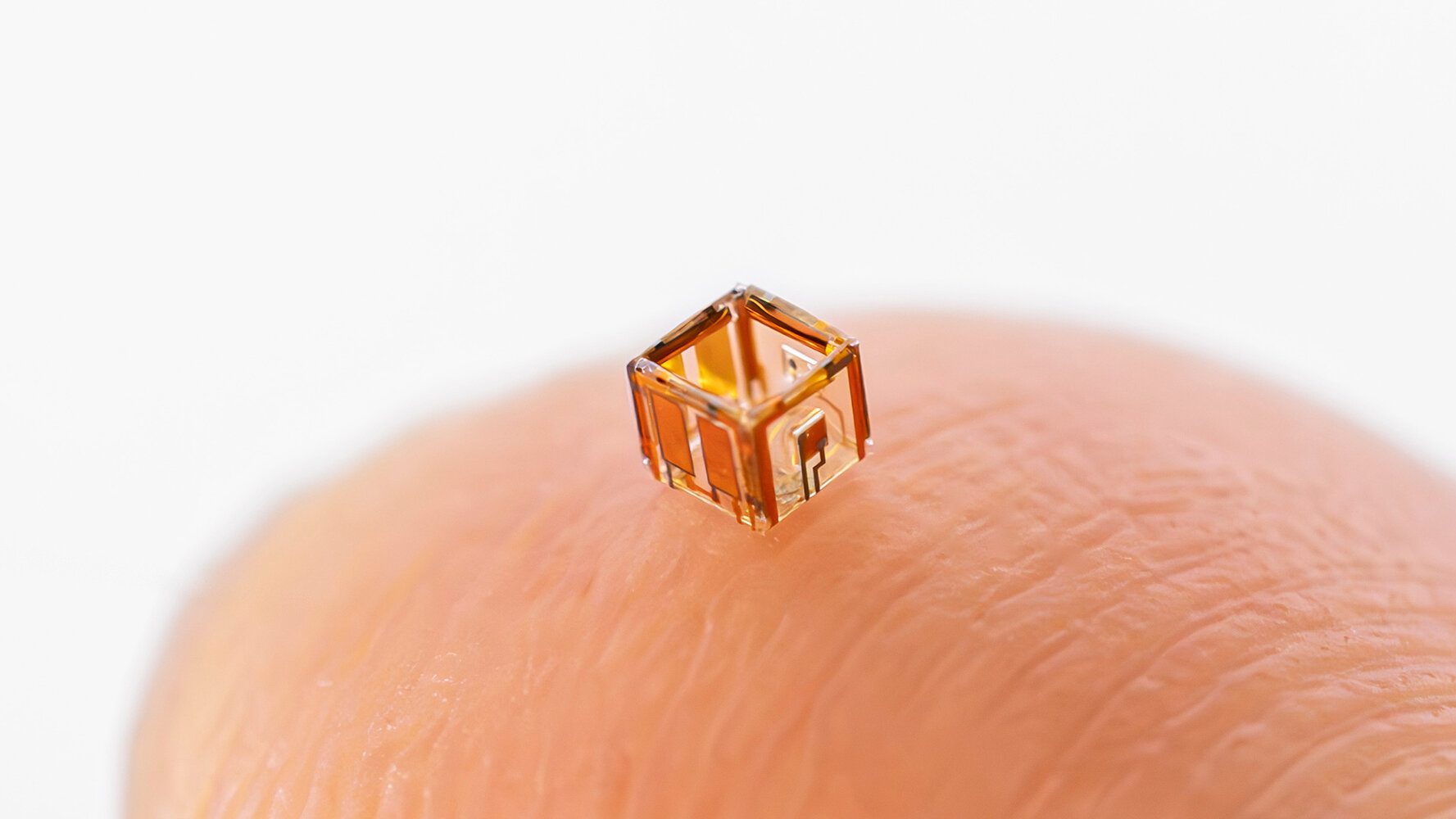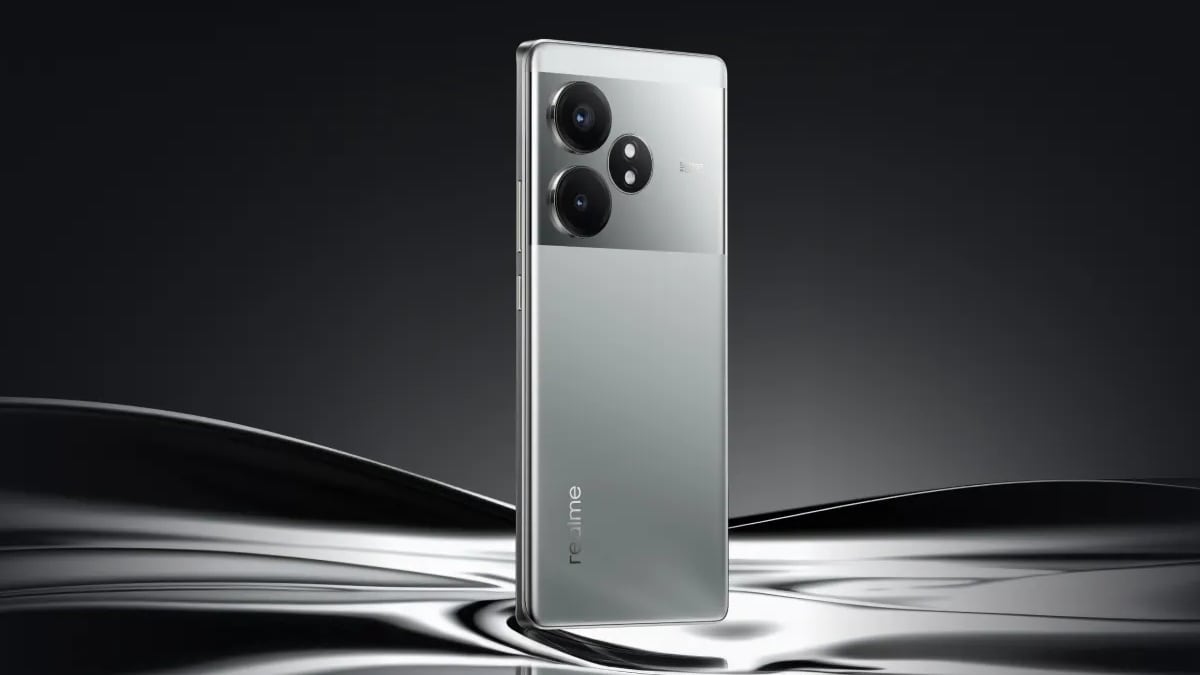
3D Modular Micorobot – Called Smartlet – Sitting on a fingertip. Credit: Jacob Müller
In a Major Step Toward Intelligent and Collaborative Microrobotic Systems, Researchers at the Research Center for Materials, Architectures and Integration of Nanomembranes (main) Have developed a new generation of autonomous microbots – TERMED Smartlets –HAT can Communicate, Respond, Respond, and Work TogeTher in Aqueous Environments.
These tiny devices, each just a millimeter in size, are full integrated with onboard electronics, sensors, actuators, and energy systems. They are available to receive and transmit optical Signals, Respond to Stimuli with Motion, and Exchange information with other microbots in his vicinity.
The findings are published in Science RoboticsIn a paper titled “Si Chiplet – Controlled 3D MODULAR Microbots with Smart Communication in Natural Aqueous Environments,
Unlike Previous Generations of Microrobots that relied on Much Larger Wireless Control Setups to Mitigate Limited Onboard Functionality, Smartlet Microrobots are powered by integrated by integrated photos Cells, Controlled by Tiny Microchips, and Capable of Optical Communication Through Embedded Micro-Leds and Photodiydes.
“For the first time, we demonstrate a self-contained microbotic platform that not only senses and moves in water butr but also interacts with Other Microbots in a Fully Programmable and Autonomous Manner,” Explains Prof. Oliver G. Schmidt, one of the corresponding authors of the study and scientific director of main.
https://www.youtube.com/watch?v=n6an5qizjb8
The microrobots are built using a flexible origami-inspired approach, based on smart multilayer patterned materials, allowing the flat electronic system to roll and fold up autonomously in Tiny Scroll-edorned holow 3d cube, with interior as well as exterior functionality. This opens up the extra surface needed for each cube to carry its own solar energy harvester, computational logic, and an optical signaling system, in addition to intercoming external faces and inboard locomotions.
When immersed in water, these smartlets can move up and down by buyency forces created by bubble-generating engines that filled the holow interior of the smartlet with GAS. They can also emit pulses of optical Signals to broadcast instructions to other smartlets nearby.
This Setup Enables Multi-Robotic Interactions in Water, Including Stimulus-Driven Movement, Synchronization, and Coordination Among Multiple Smartlets. For example, when one unit receives a light signal, it can decode the information using its onboard processor, triggering a coordinated motion or behavior in others.
“The idea of using light as bot energy and information opens up a compact and scalable way to create distributed robotic systems,” Adds Dr. Vineeth Bandari, Co-Corresponding Author and Research Group Leader at Main.

Schematic illustration of the fabrication sequence of the smartlet. Credit: Tu Chemnitz / Main
One of the key innovations lies in the smartlets’ use of a “wireless communication loop” That does not require any external cameras, magnets, or antennas.
Optical Messages are interpreted locally on Each Robot Using Custom-Coded Logic Stored on their microchips. The Smartlets Make Use of Innovative Soft-Bonding to Origami-Films to Attach Custach Custom Microscopic Silicon Chiplets, Called Lablets, Who Developed in An Earlier Project Led by Prof. Dr. John McCaskill, A Co-Corresponding Author and Member of Main. This Permit Dentralized Control and Collection – An Essential Foundation for Creating Robotic Collectives that Behave in a Coordinated Yet Flexible Way.
Beyond The Laboratory, The Potential Applications of Such Microrobots are wide-ringing. Because they are unteethed, biocompatible, and unfounded to respond to environmental cues, these devices unity one day assist in tasks such as monitoring waters, performing minimally invasive deedical Diagnostics, or probing confined biological environments.
Their ability to form interactive, stimulus-usponsive colonies un also also be used in soft robotics, Autonomous Inspection Systems, or Distributed Sensing Networks.
Dr. Yeji Lee, Co-Author and Specialist in Active Multi-Layer Microfabrication, whose recently completes Ph.D. Research provided vital contributions, Emphasizes that this work is just the persuasion. “We’re exploring ways to further Increase Autonomy by Adding Chemical and Acious Sensing Modules. These smartlets could evolve into multuctional platforms that senses, act, and adapt in Complex Fluidic Environment. “
Looking forward, the team envisions the progressive evolution of these microrobots into dynamic systems that resemble colonies of digital organisms. MUCH LIKE ZOIOIDS in Colonial Animals Such as Siphonophores, Each Smartlet Can Serve A Specialized Function – Sensing, Communication, Moving –and togera form an emergent robotic organism.
“We’re still from creating artificial life,” Cautions Prof. John McCaskill, who was a founding director of the european center for living technology in venice, “But we are starting to see how distributed intelligence and modular hardware can build Systems THE BULD SYSTEMS THE CHATEMS The Adaptive, Communicative Behavioors of Living Collectives. “
Bye building such self-contained, Communicative Microrobots, The Chemnitz Team is not only addressing fundamental challenges in microbotics but also Laying the GROUNDWORE SYSTEMS SYSTEMS SYSTEMS SYSTEMS SYSTENG FUSTEMS Evolve, and Perhaps even self-organize-Inseide water droplets, tissue scaffolds, or miniature ecosystems.
More information:
Yeji Lee Et Al, Si Chiplet – Controlled 3D Microrobots with Smart Communication in Natural Aqueous Environments, Science Robotics (2025). Doi: 10.1126/scirobotics.adu6007
Citation: Smart Micorobots Learn to Communicate and Collaborate in Water (2025, August 22) retrieved 22 August 2025 from https://techxplore.com/news/2025-08-smart-mkrorobots-comunicate- collaborate.html
This document is Subject to copyright. Apart from any Fair Dealing for the purpose of private study or research, no part may be reproduced without the written permission. The content is provided for information purposes only.



